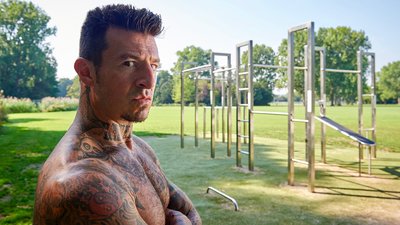I know what some of you are probably thinking: "Here's that lewd, tattooed dude from Brooklyn again. Sure, he knows about calisthenics, but what the heck can he possibly tell me about serious mass and bodybuilding?"
It's OK. My feelings aren't hurt. The very notion of "bodyweight bodybuilding" is sure to ruffle some feathers. But more importantly, it also raises many questions. Here are just a few that I've received over the years:
- Can bodyweight-only training substantially alter my physique?
- Is it possible to target a selected muscle group using bodyweight training only?
- Can you really put on mass with calisthenics?
- No, really? Can you?
The answer to all of these questions is a resounding yes! Or at least, it is if you incorporate the following rules into your training.
Rule 1: Employ Progressive Resistance
In the world of bodybuilding, success is based on attributes like muscle symmetry, size, shape, and proportions. It is not just what your muscles look like individually, it's also how they relate to your body as a whole. For this reason, the uniqueness of any given bodybuilder's anatomy will dictate some of the specific details within their training. Still, all bodybuilders employ progressive resistance to shape and control the development of their musculature.
When you use external resistance, you can increase the load simply by adding more weight to the apparatus. This is true whether you're working with a barbell, dumbbell, or isolation machine. Adding more iron will make it heavier. It's a no-brainer.
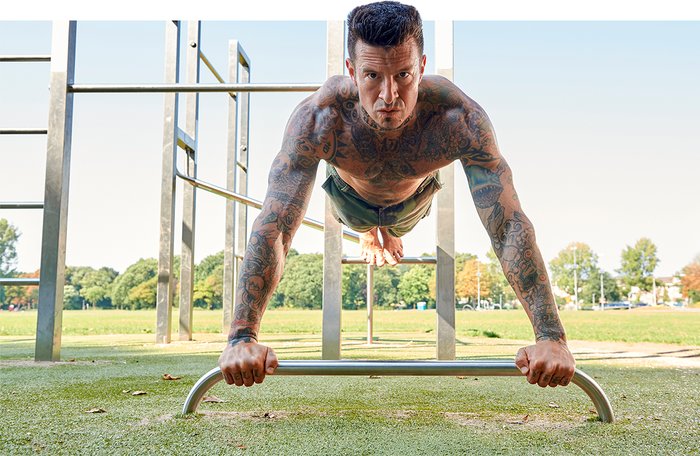
However, for those who train using bodyweight, it's more subtle—and I would argue, more sublime. Because your body's weight will not change from set to set, you have to artfully increase the resistance by making adjustments to the exercise, rather than to the load.
I discussed some of these techniques in my article "Increase Your Strength Without Using More Weight," including some options:
- Altering the leverage. Example: feet-elevated push-ups vs. standard push-ups
- Changing the weight-to-limb ratio. Example: pistol squats vs. lunges
- Increasing the range of motion. Example: pull-ups to chest vs. pull-ups to chin
All three will give your muscles novel stimulus and help you to keep progressing—and growing.
Rule 2: Rep Out
Unlike training for absolute strength, where we generally shoot for 1-5 reps using around 80-90 percent of our maximum load—or a version of an exercise we can only perform for those reps—our goal in bodyweight bodybuilding is to build and sculpt muscle mass.
In this case, we need more reps. I generally suggest the 8-12 rep range, with 60-80 percent of your max, where you really have to fight for it toward the end of each set. This will allow you to inflict more damage on the muscle fibers, which is one of the well-established mechanisms of muscle growth.
When you can't adjust the load on the bar or weight stack, it may seem tricky to gauge 60-80 percent of your max. It doesn't have to be. I recommend choosing exercises where your maximum efforts are reached in that 8-12 rep zone, while still maintaining good form.
In other words, if you can bang out 20 reps, you need a harder exercise. If you can barely squeeze out 3 before your form starts to suffer, then try something more forgiving. Wide pull-ups, one-arm push-ups, or toes-to-bar leg raises may be appropriate here, but like every training protocol, the specifics will vary from individual to individual.
Rule 3: Split It Up
Calisthenics goes hand in hand with full-body workouts. However, in the case of bodyweight bodybuilding, this may not be the best approach. Because you aim to target and exhaust your muscles—as opposed to leaving some proverbial "gas in the tank"—you'll probably get better results when you train each muscle group more intensely, but less frequently.
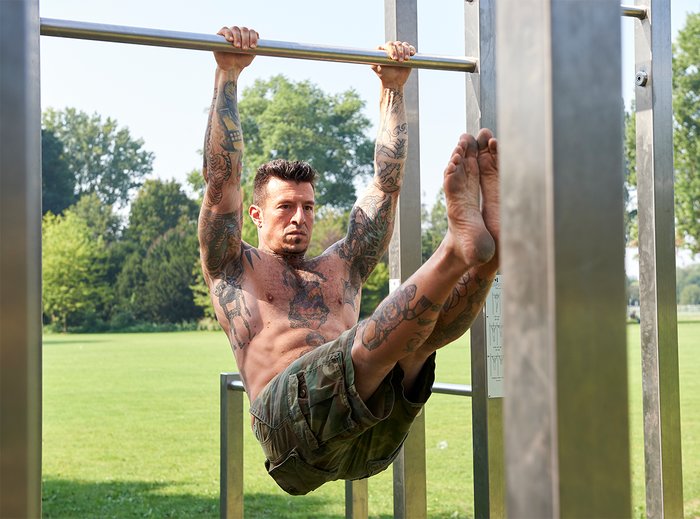
That's why a split routine of emphasizing different body parts on different days is great for putting on size. There are numerous different ways to approach this, but here are two of the classics:
- Upper body/lower body
- Push/pull/legs
The advantage is clear: Your arms can rest when you train your legs. Your chest can rest while you train your back. This gives you more time to grow and repair.
Rule 4: Don't Be Afraid to Bulk and Cut
Just as you must eat less to lose weight, you must eat more to gain. But when you do this, be prepared for some increased body fat as you are putting on muscle. Of course your experience may be unique, but it's probably unrealistic to think that you can pack on extra pounds of lean muscle without also increasing your body-fat percentage to some degree.
That's why people bulk and then cut: you can't do them both at the same time very well. So rather than try to crack this timeless riddle and fail, cycle your diet between putting on muscle and reducing fat. So yes, you may lose some of the detail on your calisthenics body in the short term, but be confident that you're doing it for a good reason—and that you can lean down if you commit to it as fully as you did to growing!
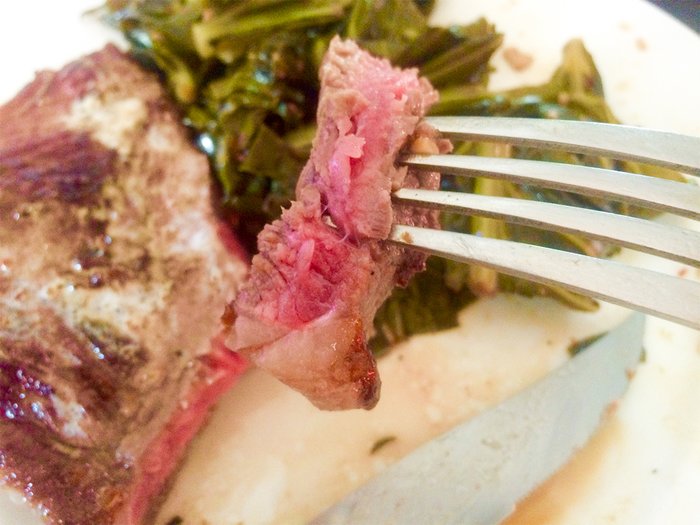
In this regard, bodyweight training and bodybuilding have a lot in common. Bodyweight training favors a low body-fat percentage; bodybuilding demands it! Being extraordinarily lean not only makes your physique look more ripped and your body appear more muscular, it's also essential if you want to develop a high degree of vascularity.
Of course, there are other tricks you can employ to appear more lean and defined, ranging from water manipulation to tanning, but they're not for everyone. For most of us who are not looking for that competitive edge by any means necessary, dialing in a diet high in protein, nutrients, and fiber is a great start!
Rule 5: Get Creative with the Classics
Recently, a young man named Alex Ceban reached out to me. He is a true calisthenics purist in his training, but he was embracing a challenge that not a lot of calisthenics fanatics have undertaken to my knowledge: He was preparing for his first physique competition by training 100 percent with bodyweight.
Functionally, Alex could do it all, from one-arm push-ups to pistol squats and even the human flag. But he reached out to me because he knew that to compete he had to focus on aesthetics. He wanted to know the most effective bodyweight exercises he could do for his traps.
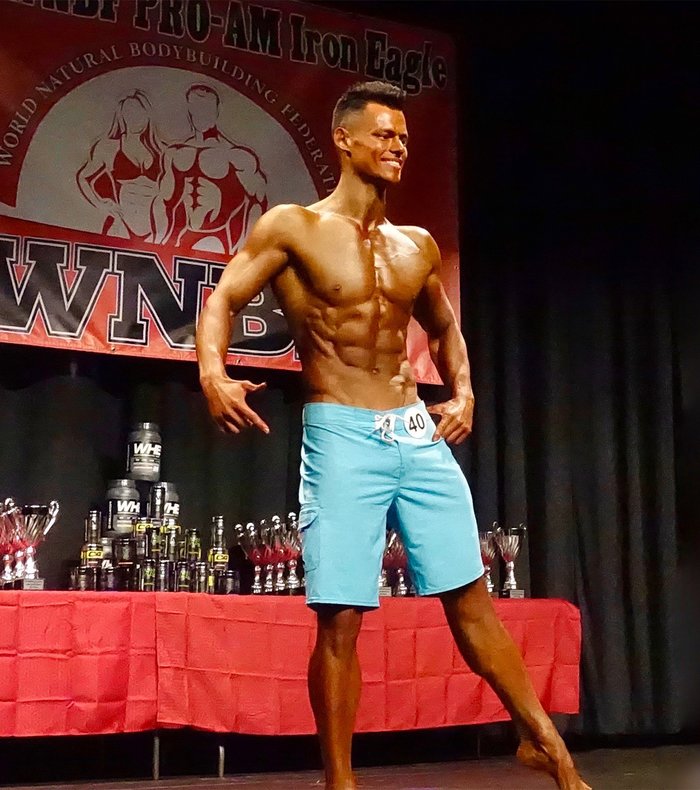
In my reply, I recommended he try modified handstand push-ups. To target the traps more explicitly, I suggested keeping his hands elevated on parallettes, so he could extend his range of motion, as well as shift some of the focus from his deltoids to his traps. I also prescribed wide pull-ups, but told him to pull the bar behind his neck, rather than in front, in order to target the desired area.
The upshot for you: Although bodyweight training is generally regarded for its complete muscular recruitment, when we get creative, we can still dial up the intensity on any body part we choose.
With my advice and his hard work, Alex placed number one in WNBF Amateur Men's Physique, employing bodyweight only. And you'd better believe that all the other rules here were ones he lived and breathed in order to succeed!
Rule 6: Work Hard
This is the most important rule on this list. In life and fitness, results do not often come without hard work. Fitness must be earned. If your training doesn't feel strenuous, then it isn't. And it's probably not working.
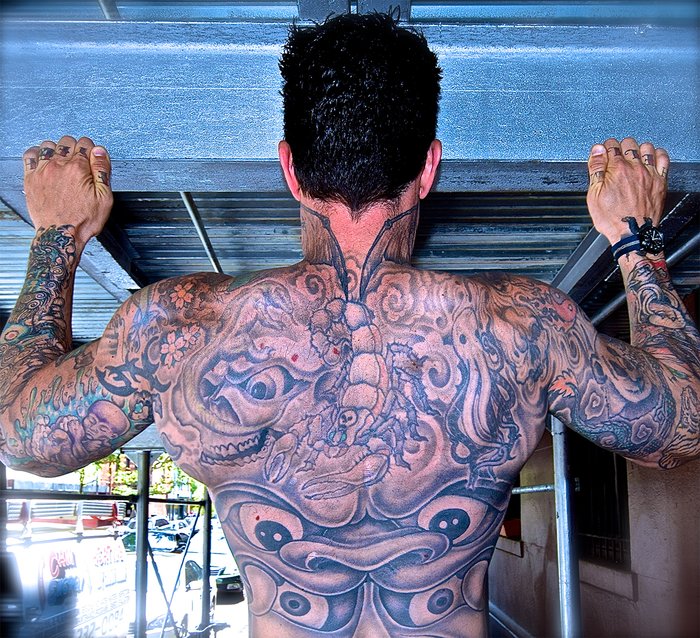
You must work hard. When I say that, I don't mean simply showing up and going through the motions; I mean effort and I mean hours. Put in the time and make it count.

